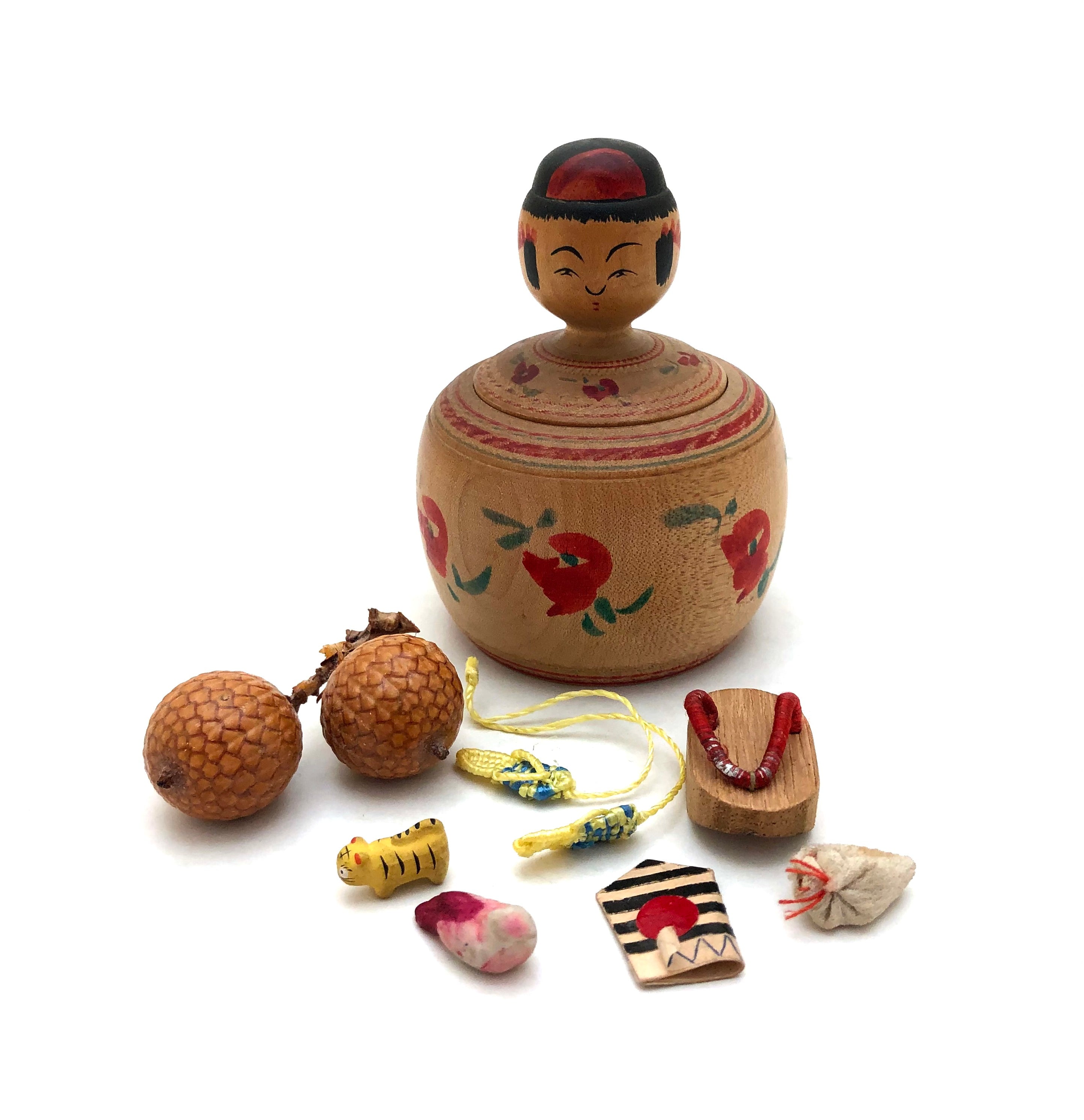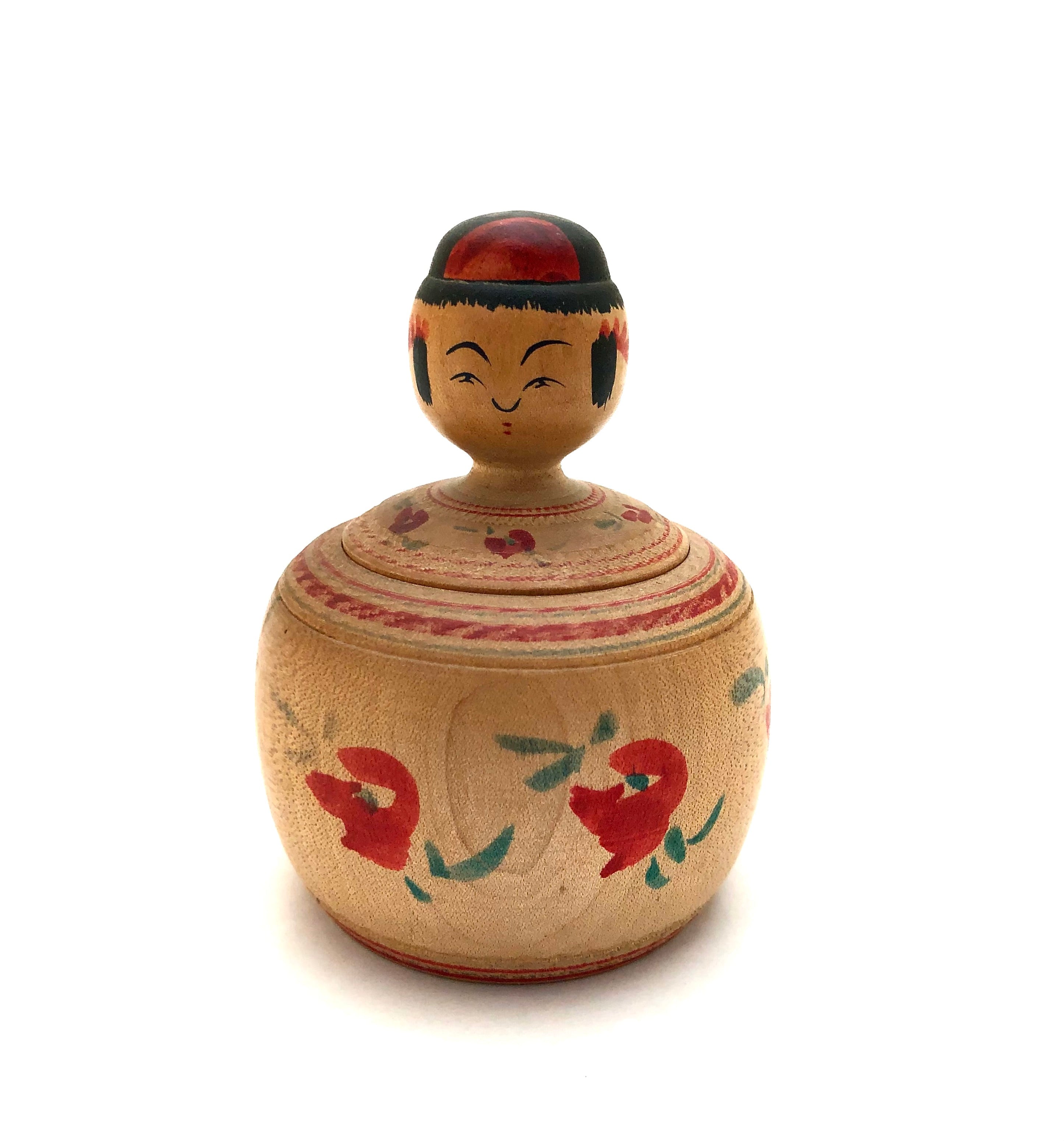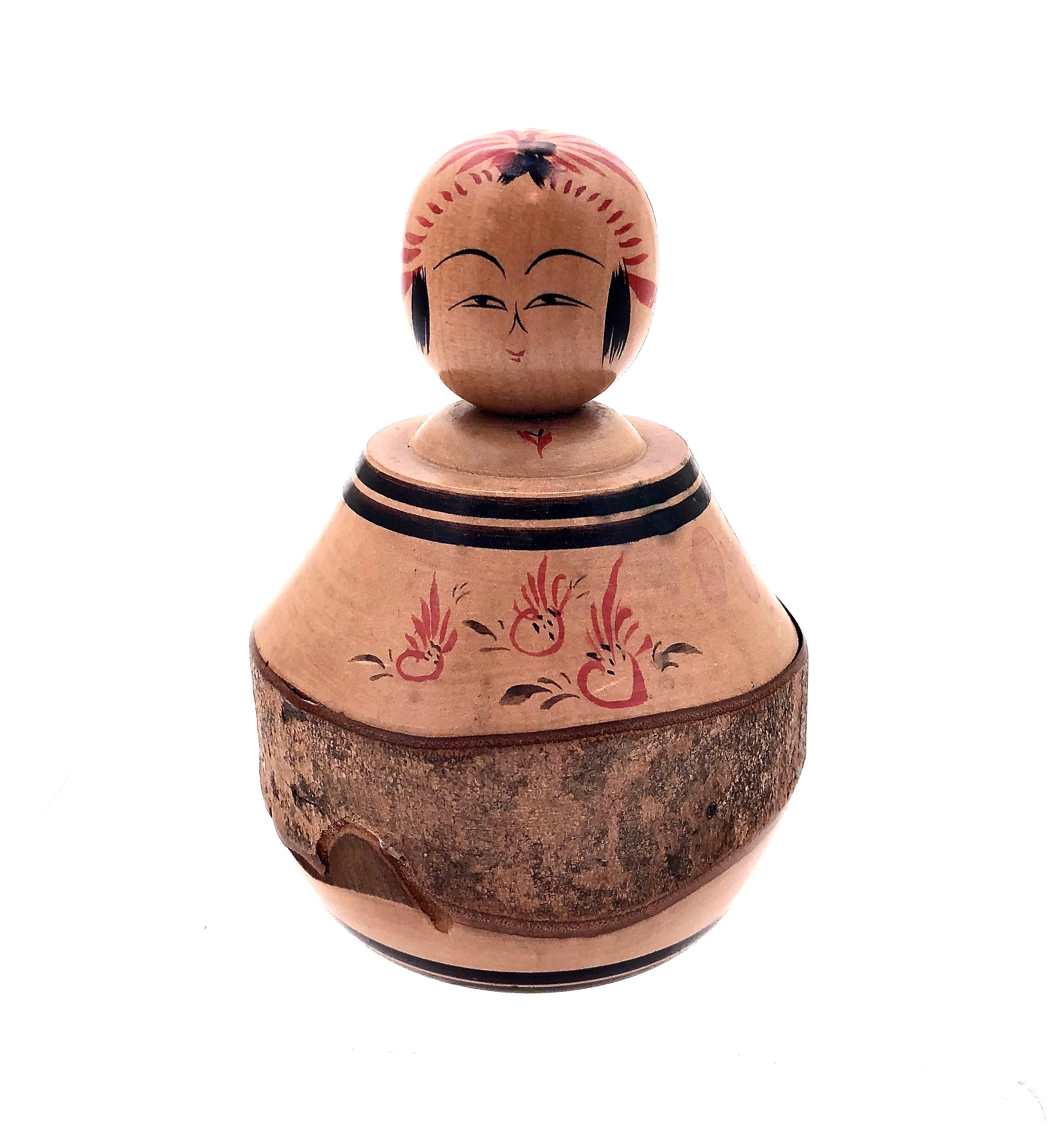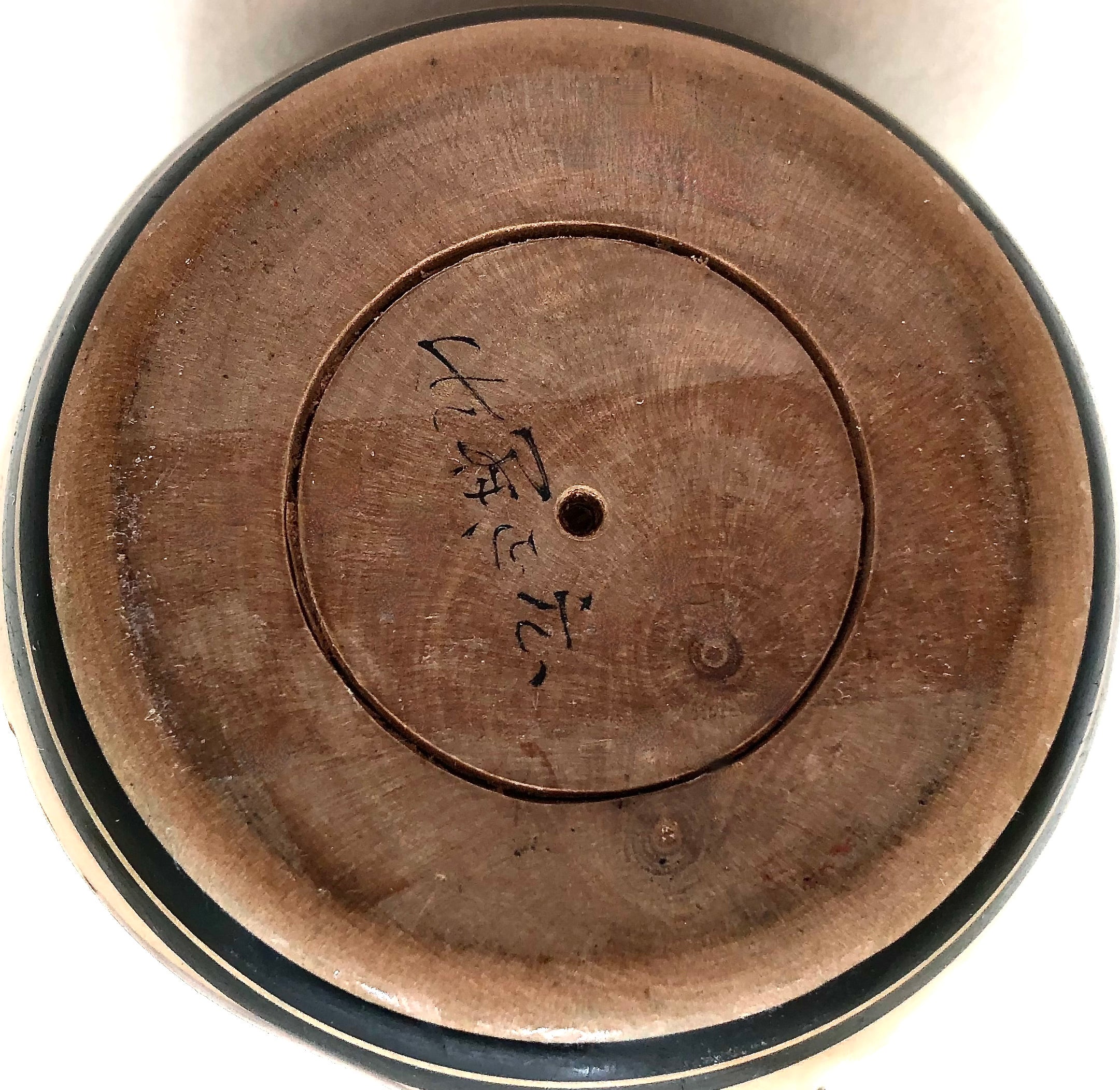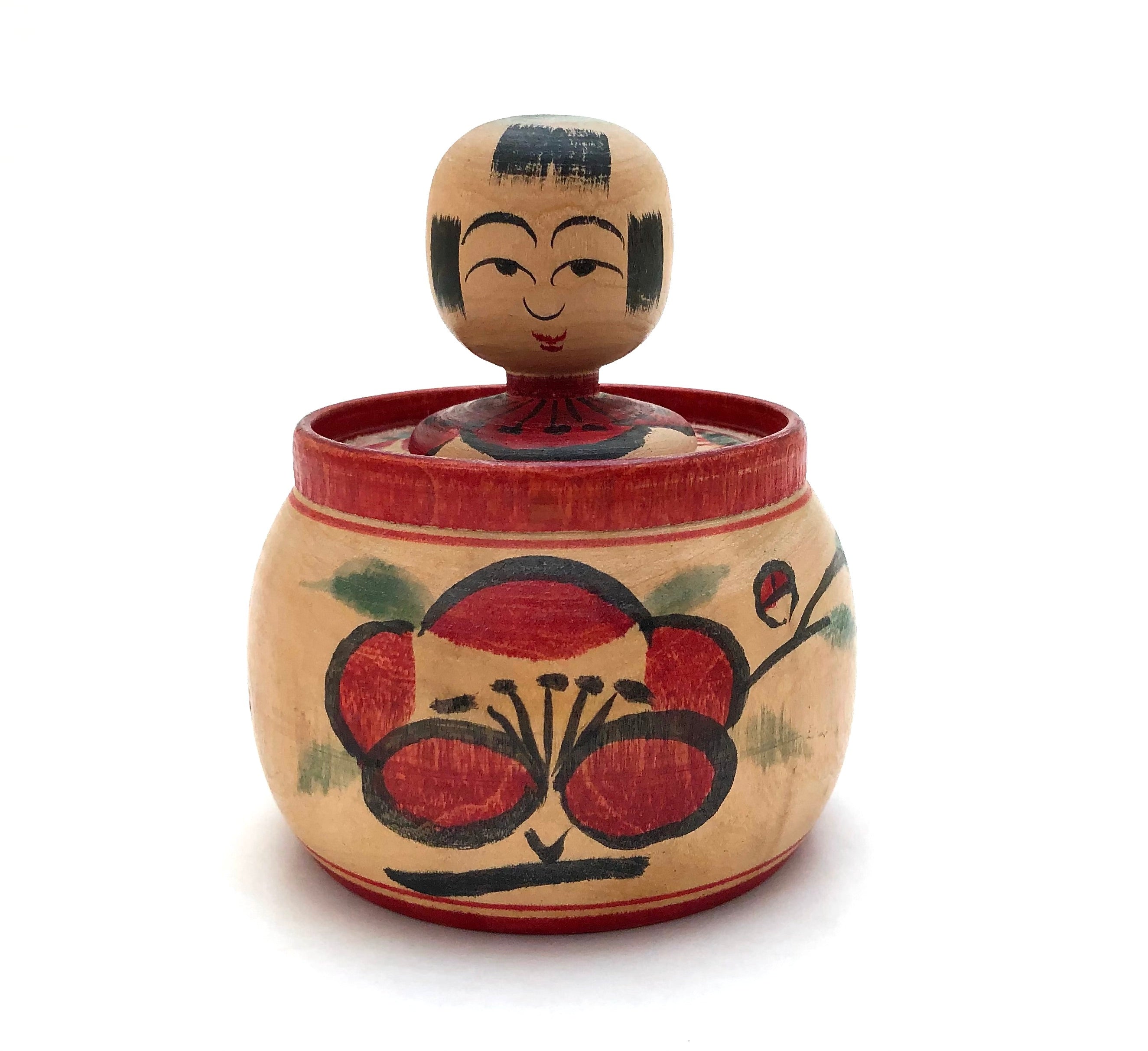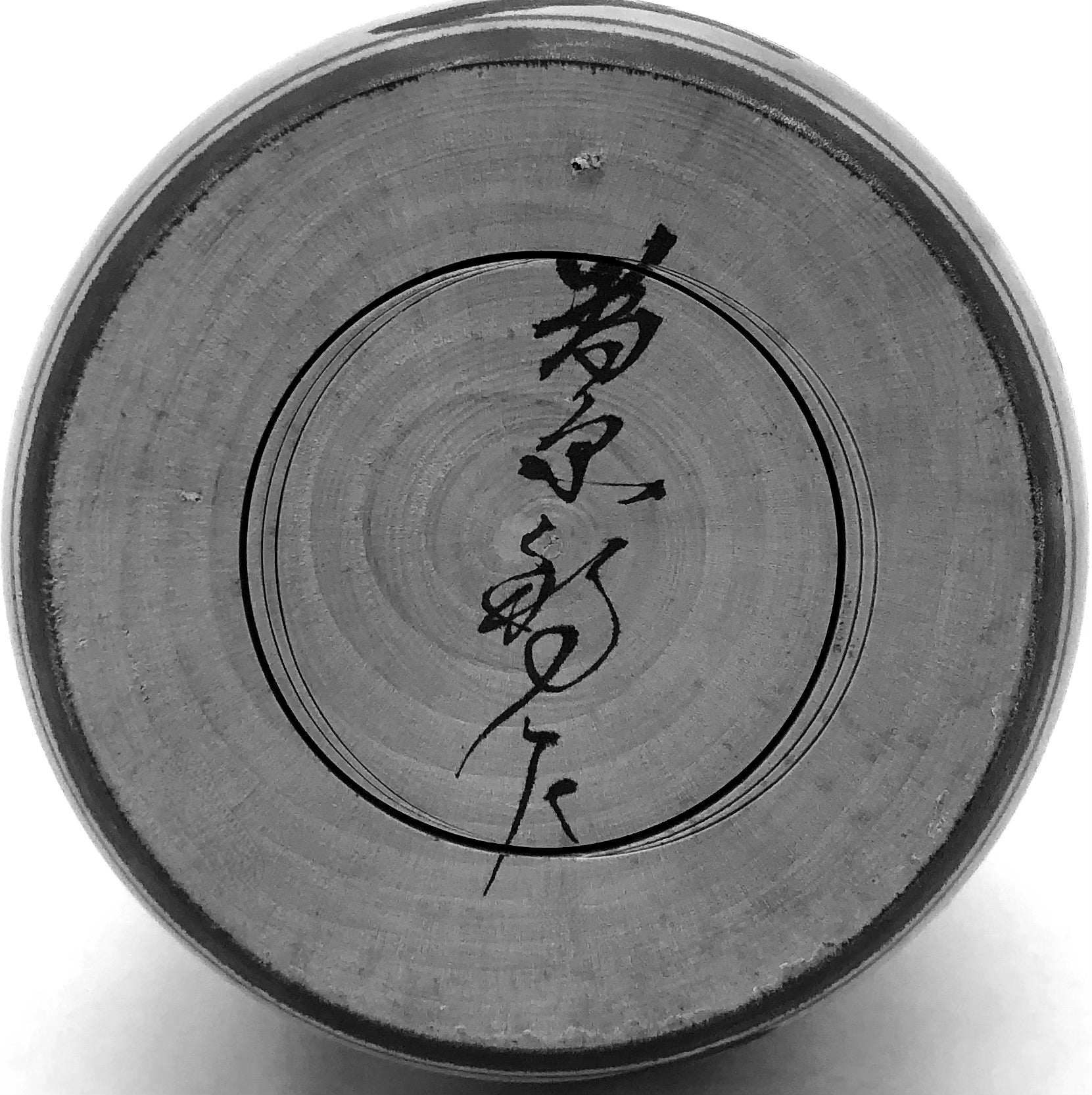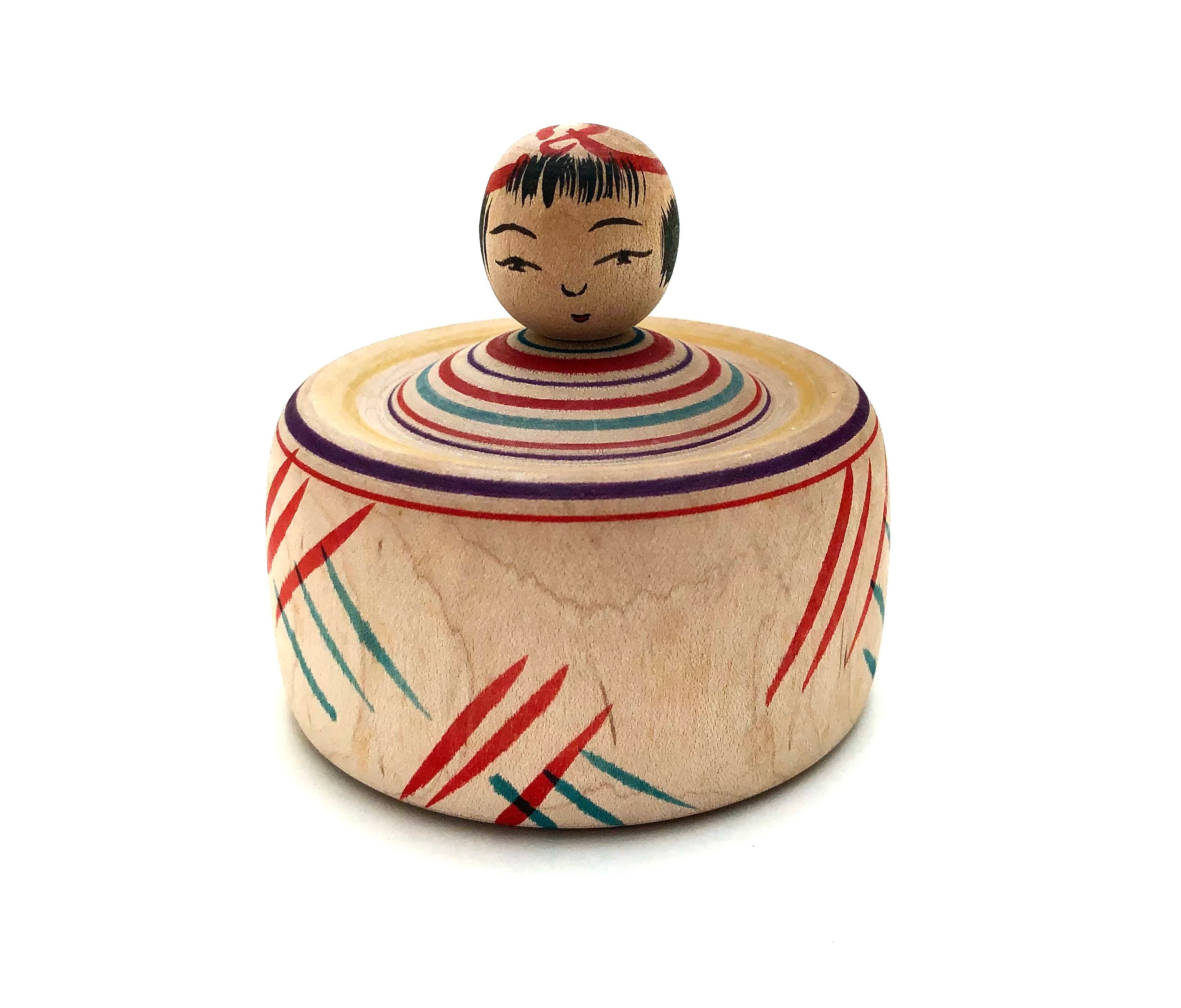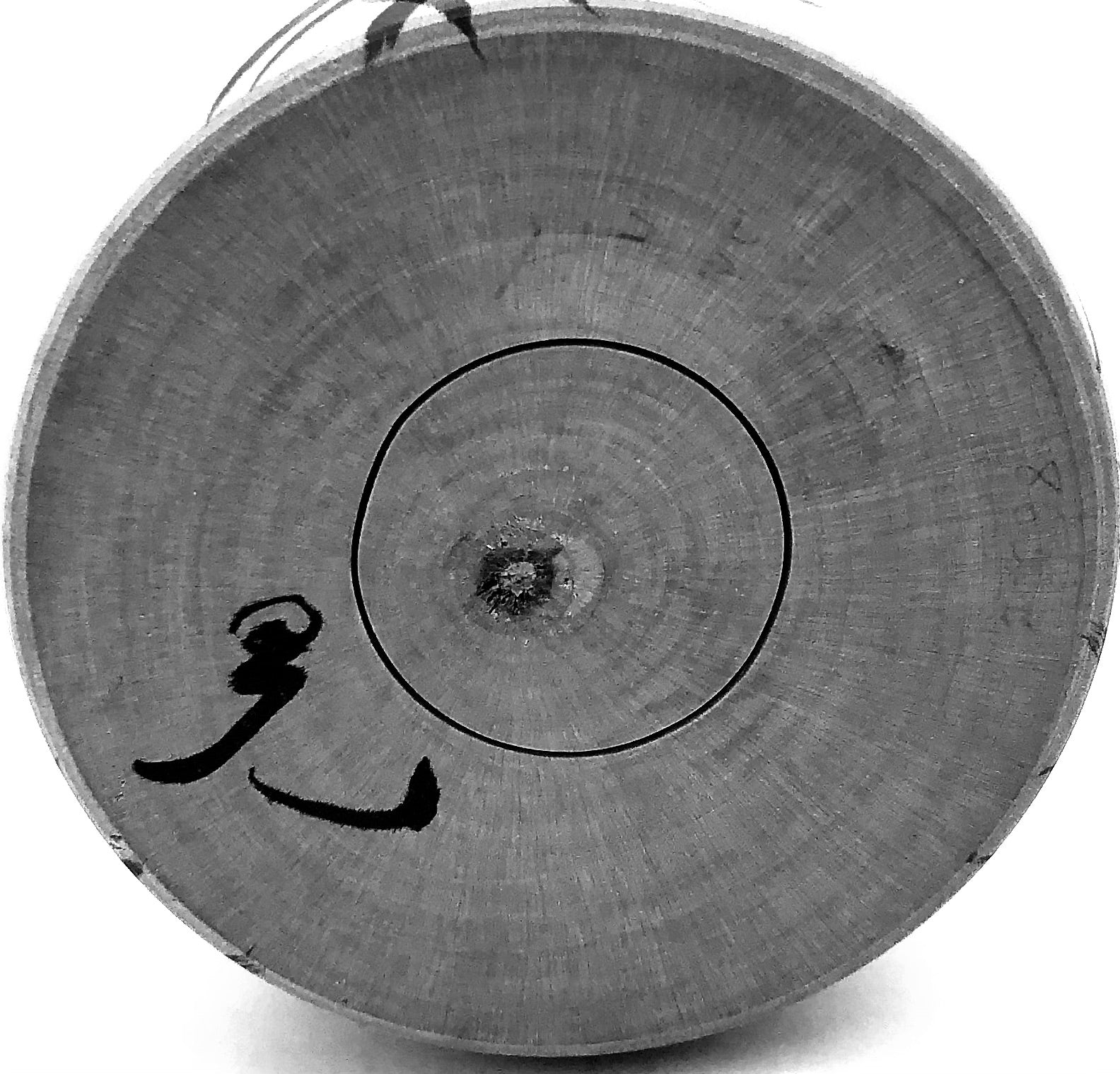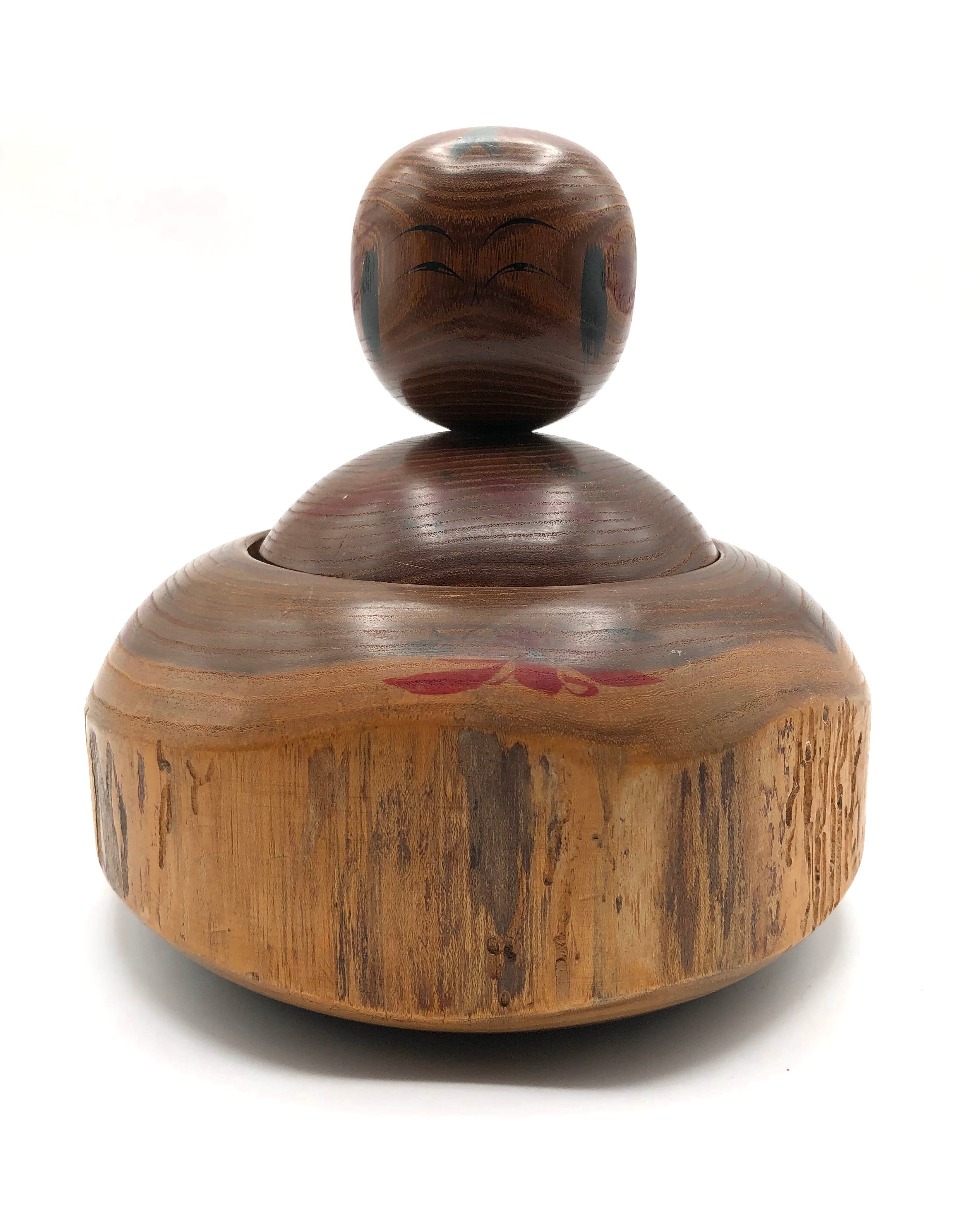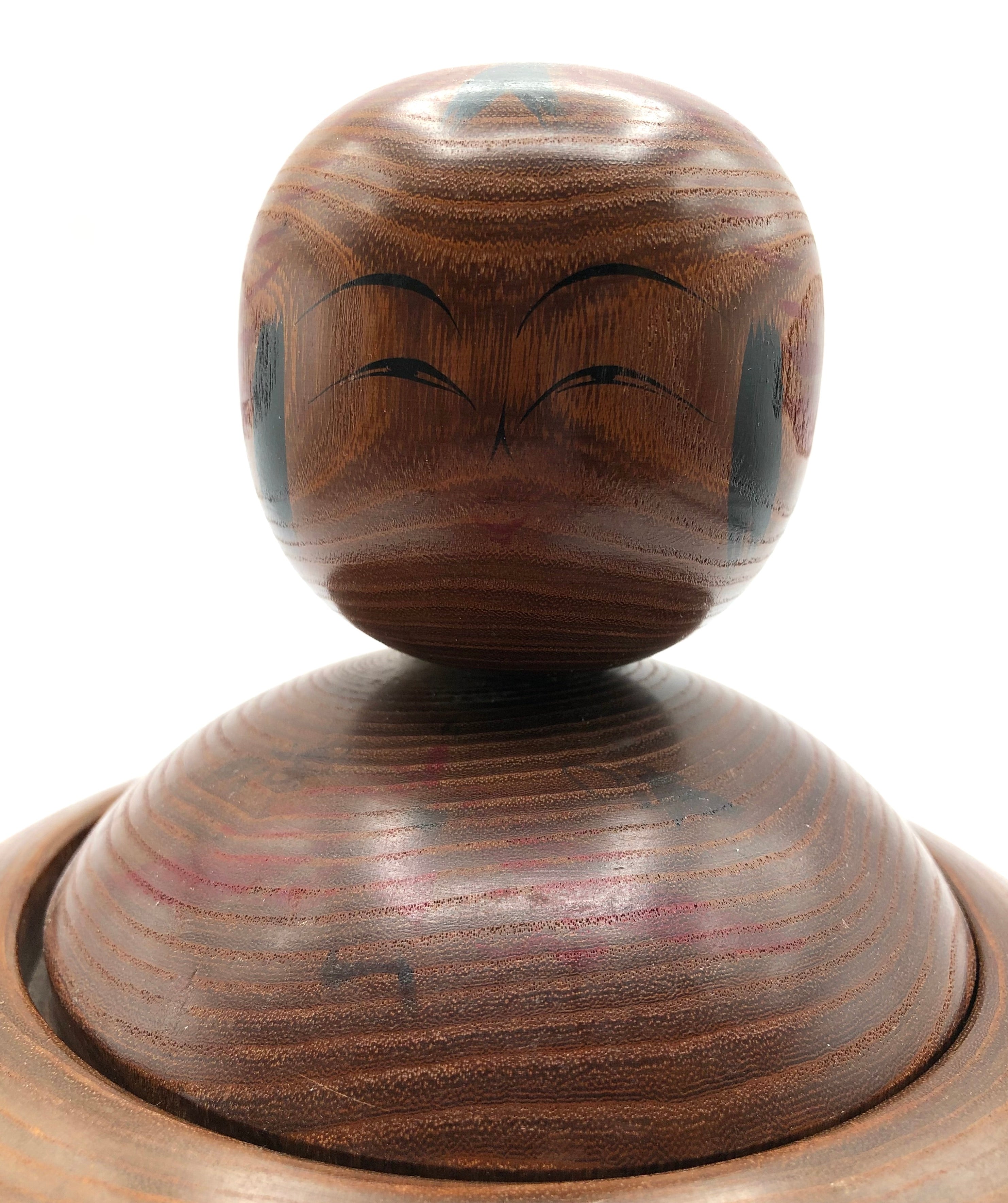Ejiko | Izume.Ko | Nemariko
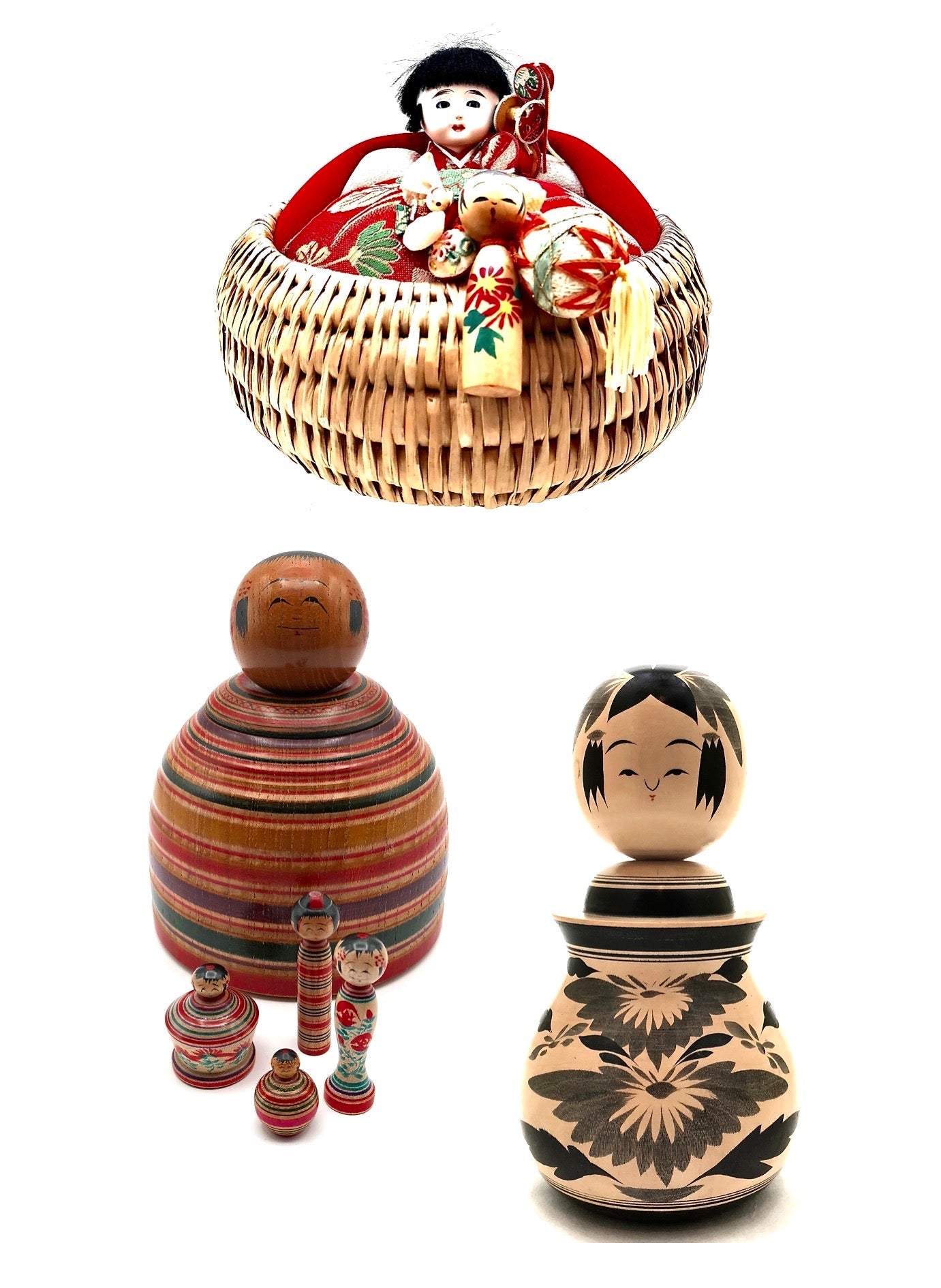
These three types of doll creations and hand-crafted production were considered the bearers of good fortune and blessings. These artisans were not only loved for their creations but also respected and valued as an integral part of society.
Throughout Japan, children have always occupied a privileged place in society, and this is reflected in multiple aspects of daily life, and cultural traditions created by traditional Kokeshi woodcarvers. Many of these talented woodcarvers, (Kiji-ki) devoted much of their work, when they were not working on temple constructions, to the poetic productions related to childhood. The Izume.Ko | Ejiko | Nemariko is the only other doll forms that transcend all ten+one different traditional types. While these forms are not considered a separate member of the ten original families, it later was accepted by collectors as its entity, and as a traditional doll in its own right.
All this is found in traditional crafts, which devote much of their poetic production to childhood. These unique versions of Kokeshi are quite rare for many were given to expecting mothers commemorating the birth of their child. During this period Haiku was very popular and we found this expressive Haiku by Masaoka Shiki (1867-1902) celebrating these doll forms and expressing their uniqueness beautifully:
The voice of children,
warm and welcoming,
like the warmth of wood.
IZUME.KO: A Functional Form of Entertainment
This form of a child's toy is referred to as an Izume.ko (“baby Isume”) which dates back to the early 1910s. The toy is based on an Isume, (wicker container) traditionally used to keep rice warm: farmers would place their babies in baskets during the working season. This way, they could easily carry but also keep an eye on the little ones as they worked in the fields. Small toys were placed in the basket along with the baby to comfort and soothe the mother during the day and allowed them to watch the little ones while they worked the field. The earliest versions of the Izume.ko doll was a small version of the woven basket that contained a baby covered in a small piece of cotton representing the baby's blanket. Miniature toys were then tied to the edge of the basket.

EJIKO: Containers with Surprises
The Ejiko which began in the 1920s was specifically made as a toy with a great deal of diversity of subject matter, formation, and ornamentation. Ejiko began in the Tsuruoka region of Yamagata Prefecture that dates from the early 1910s and which comes from Tsuruoka, of the Yamagata Prefecture. This doll is in the category of what is referred to as the Izume.ko Doll, (Izume.Ko means “Isume baby” in the Yamagata dialect) and is based on an Isume, a woven basket. All Ejiko follow the same basic short, rotund style. However, this style was hollowed out, with a separate, upper part of the body, (neck and head), also serving as the cover, or lid (these are called Obunko). The body would then be filled with miniature Kokeshi dolls, or with other small toys such as spinning tops, (koma).
The facial features, in particular, will be the same as the regular-shaped dolls, as will the hair and any other decorations on the head. The Ejiko is the only other doll form that transcends all ten+one different traditional types. While this form is not considered a separate member of the ten original families, it later was accepted by collectors as its own entity, and as a traditional doll in its own right.
NEMARIKO: A Variation on a Theme
Nemariko dolls followed the same basic Ejiko style, low and round, and most often referred to as an Ejiko doll. Unlike the Izumi.ko doll from which this doll was based it did not hold anything and was not a container for miniature toys. All Nemariko follow the same basic short, rotund style and some incorporate a “bobble” head and delicately tapered shoulders. The facial features typically were painted to look like a child with decorative bangs and the same as the regular-shaped Kokeshi dolls regarding decorative detailing. Most of the Nemariko dolls had painted and striped bodies or depicted regional flowers like the chrysanthemum, but particularly motifs that represent the individual Traditional Families.
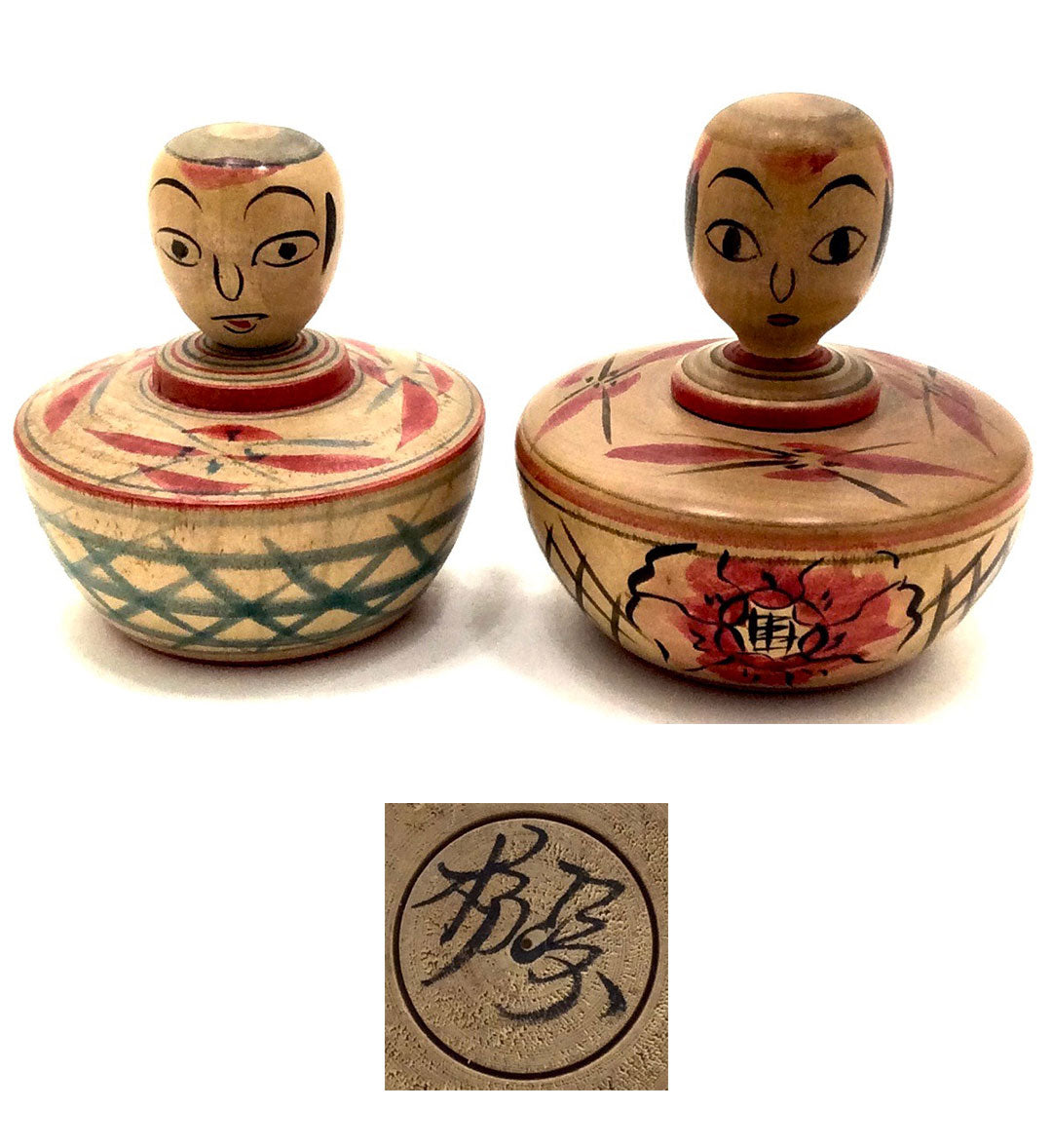
Nakanosawa-Kei
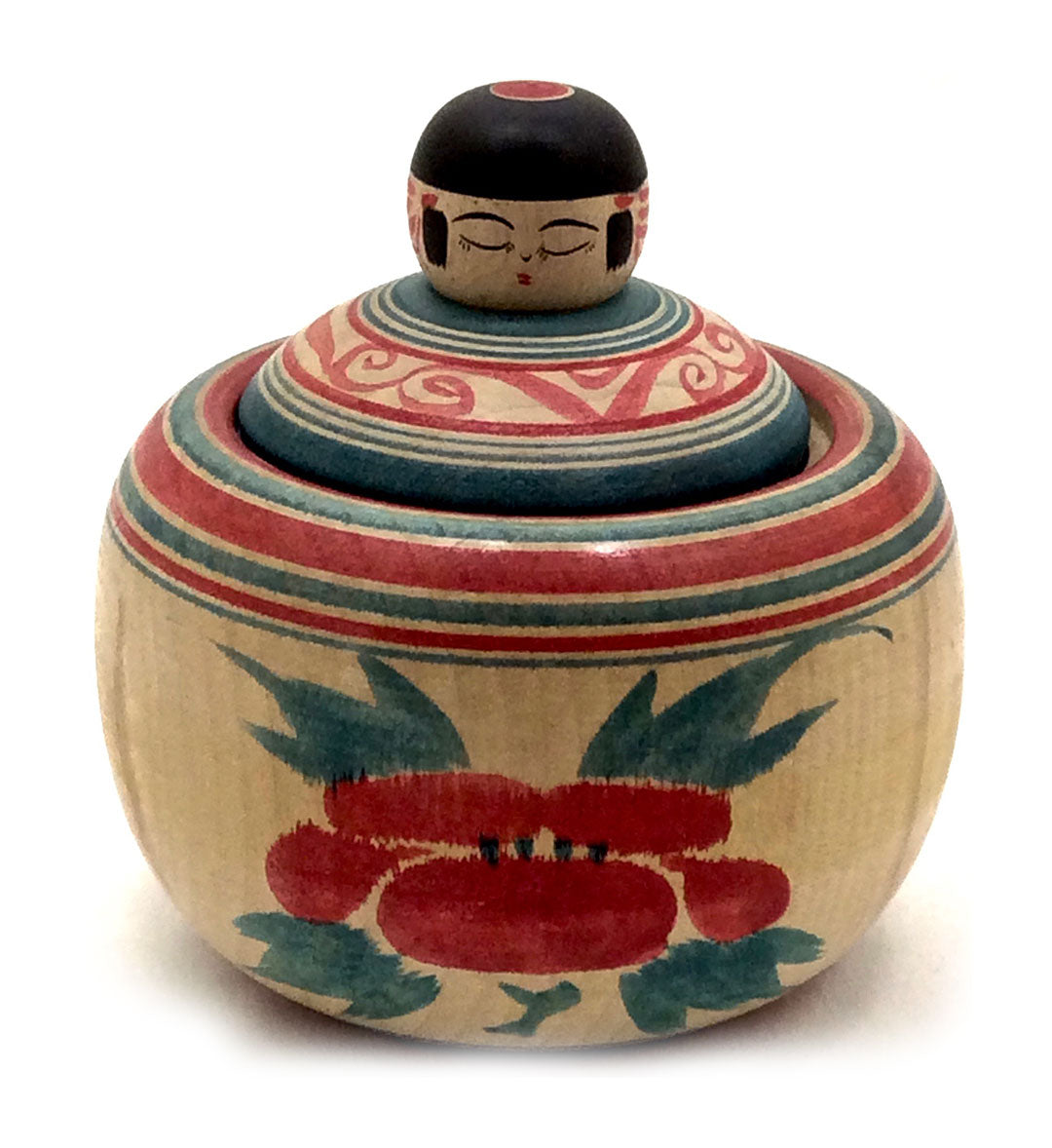
Nurugo-Kei
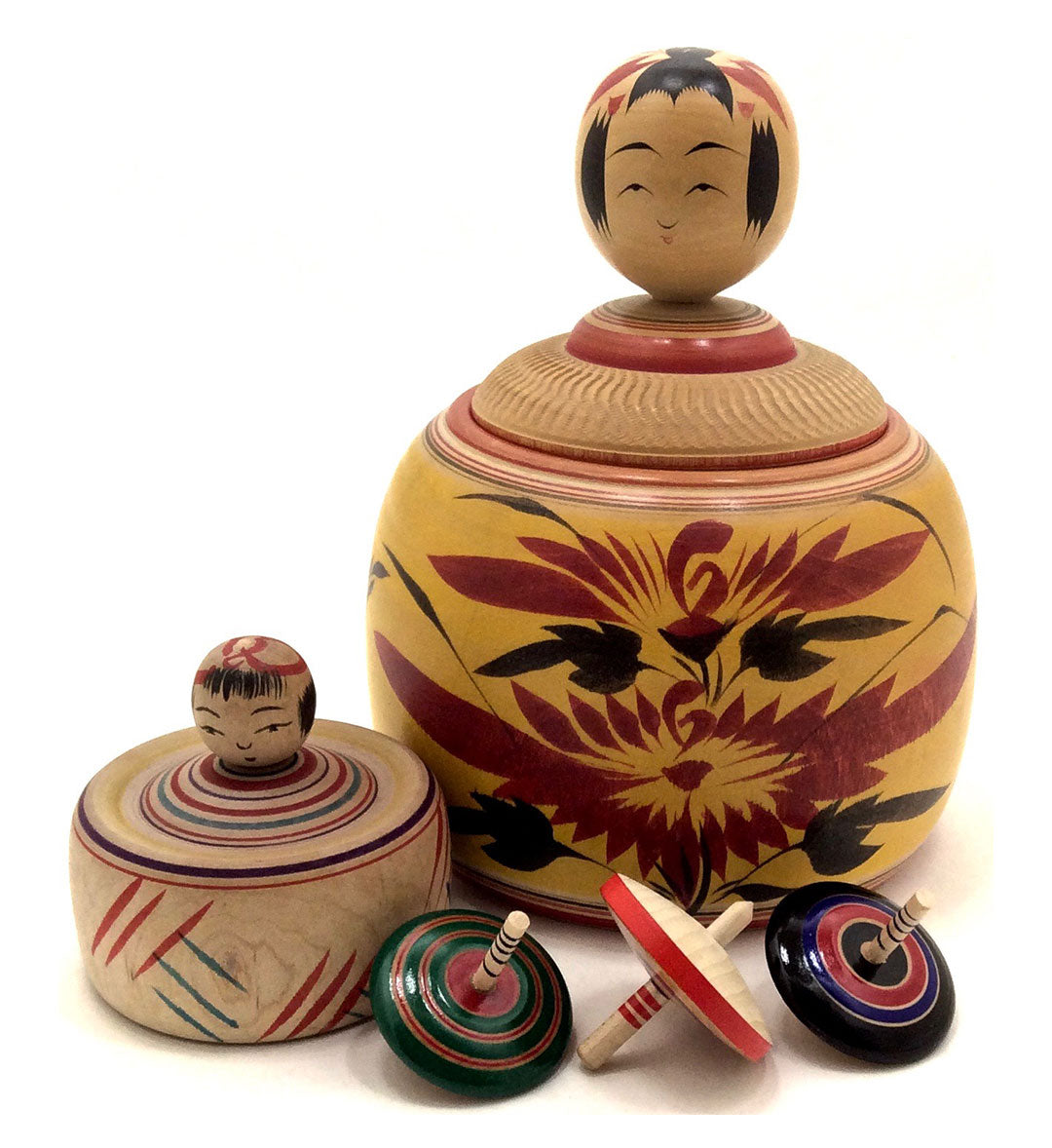
Narugo-Kei
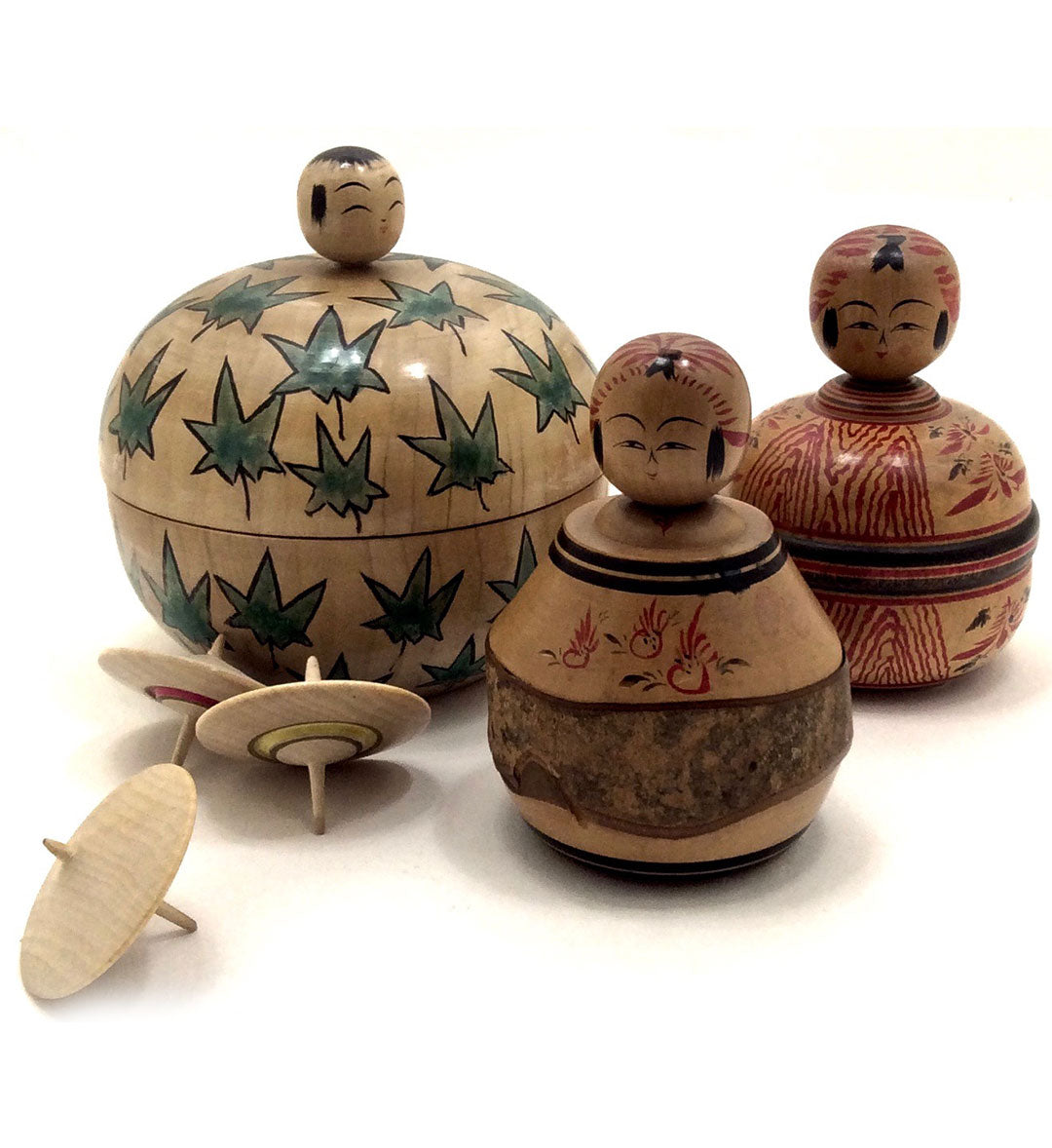
Tougatta-Kei
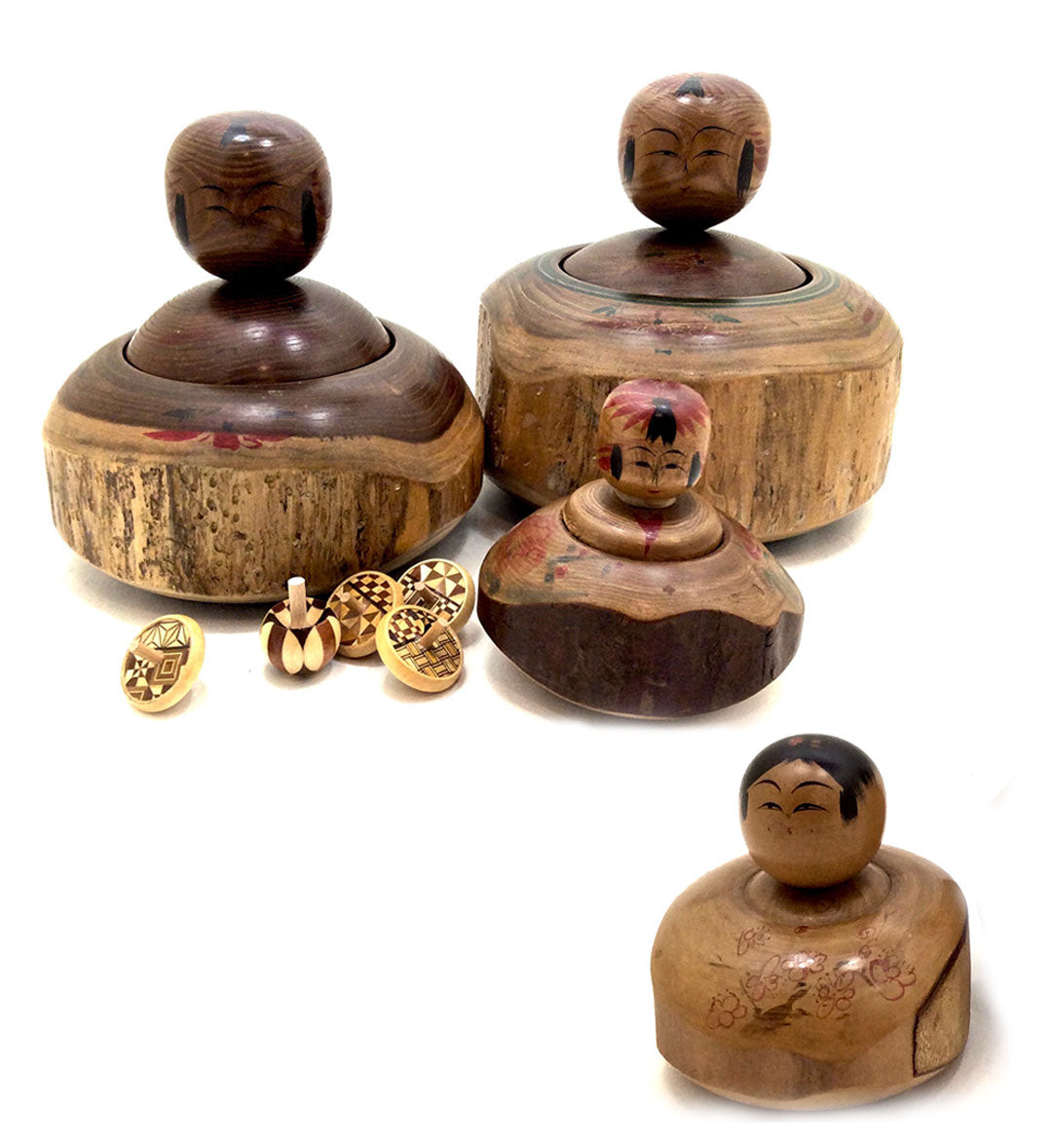
Tougatta-Kei
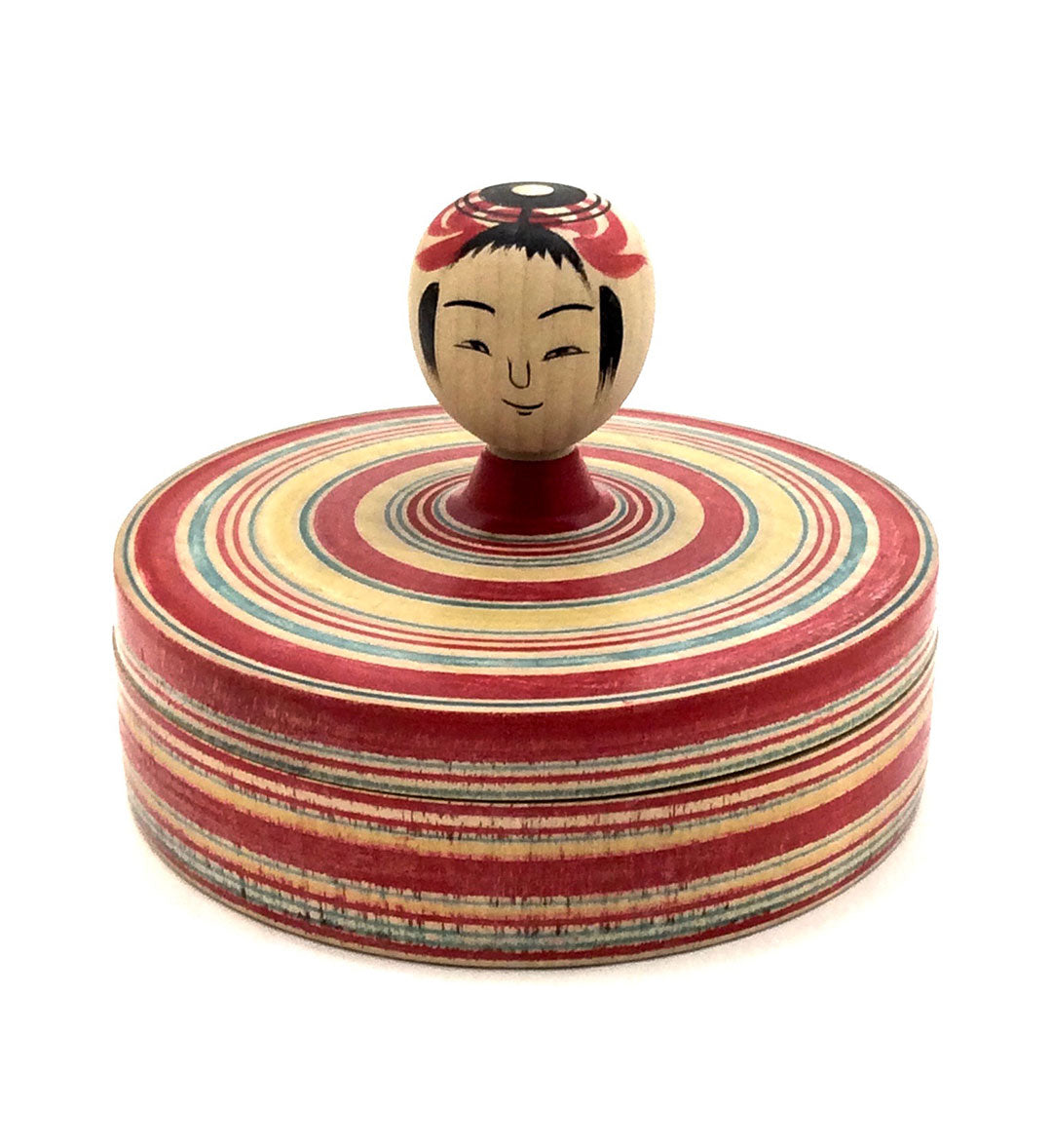
Tsuchiyu-Kei
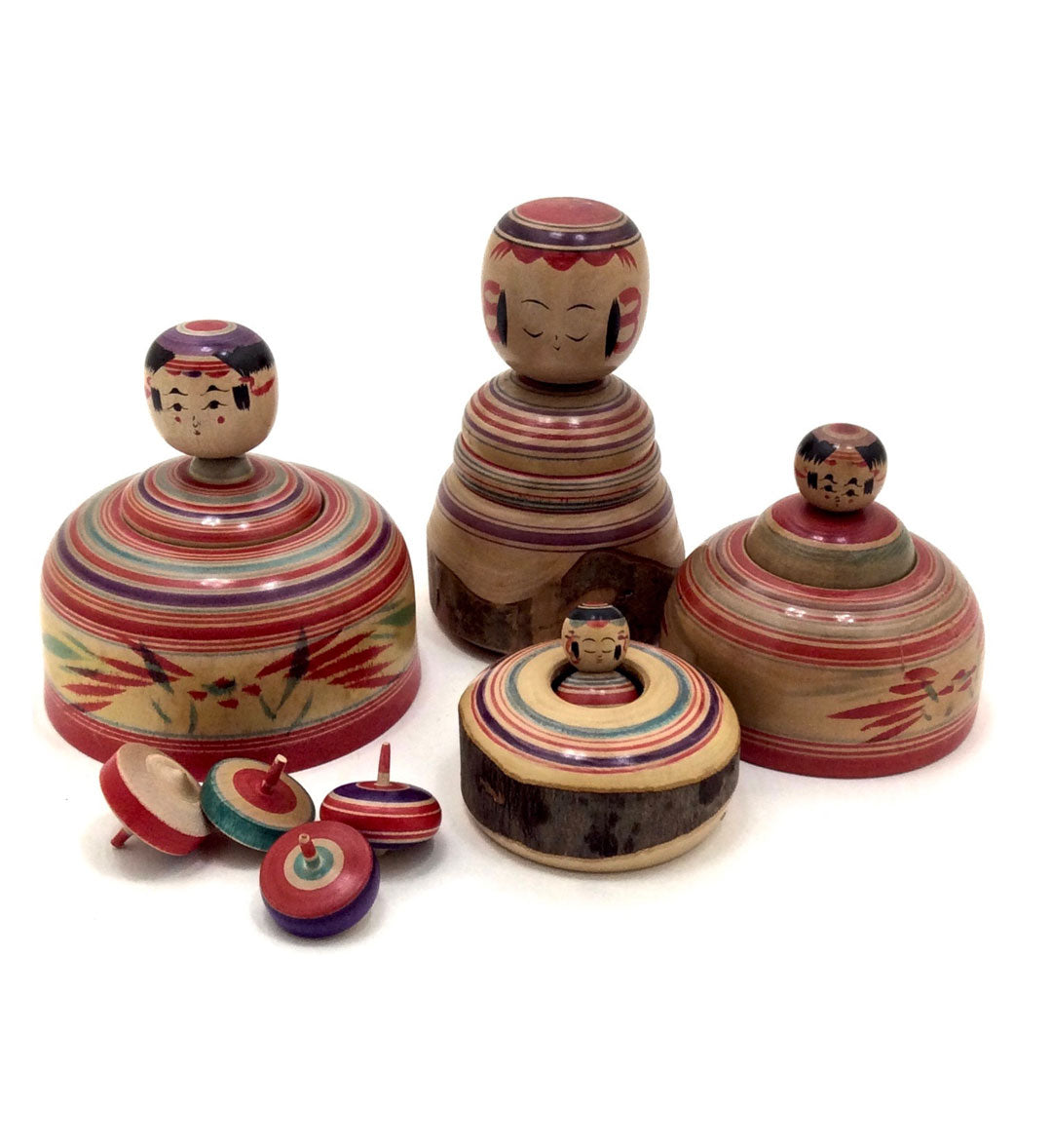
Yajirou-Kei
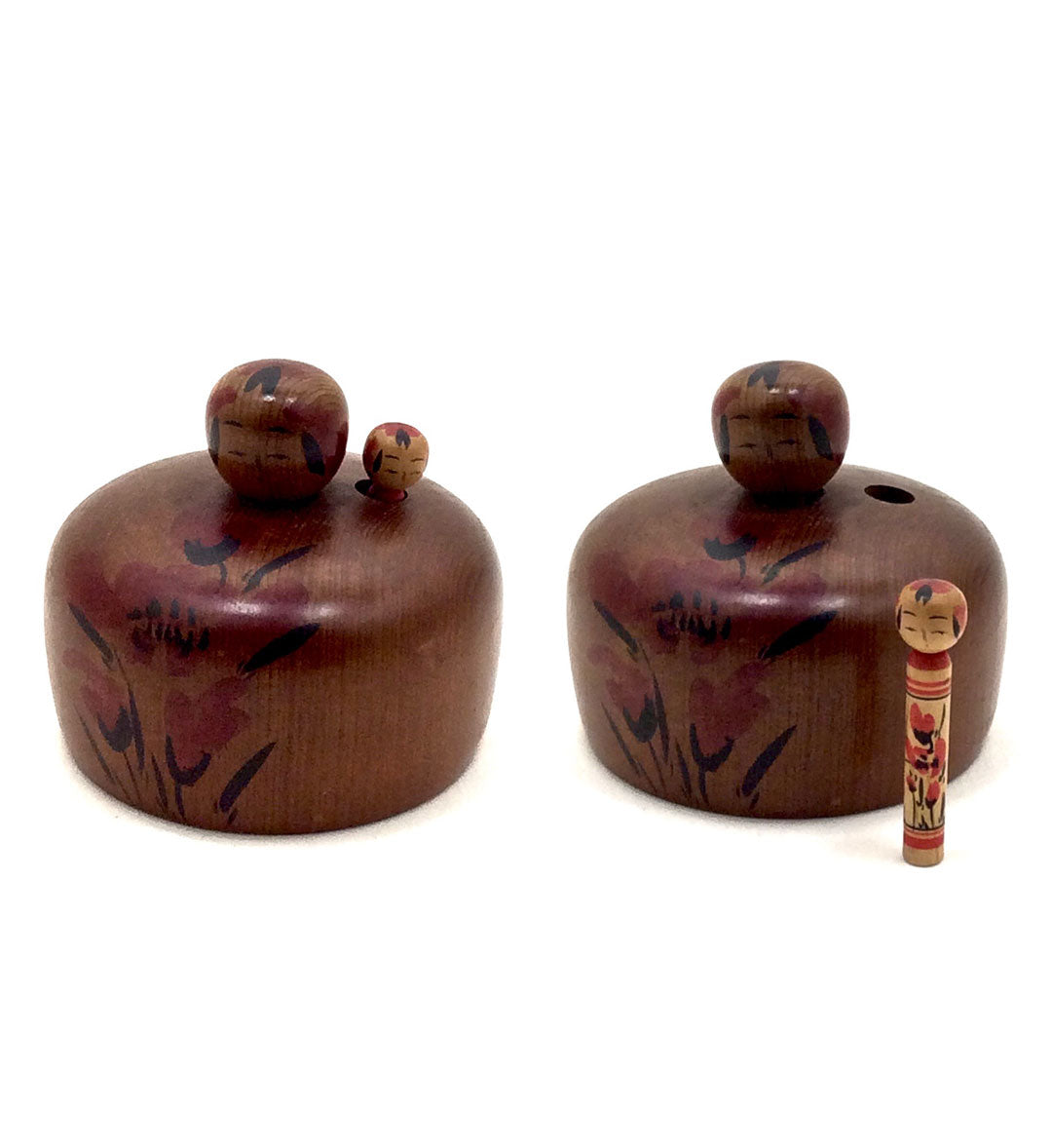
Yajirou-Kei
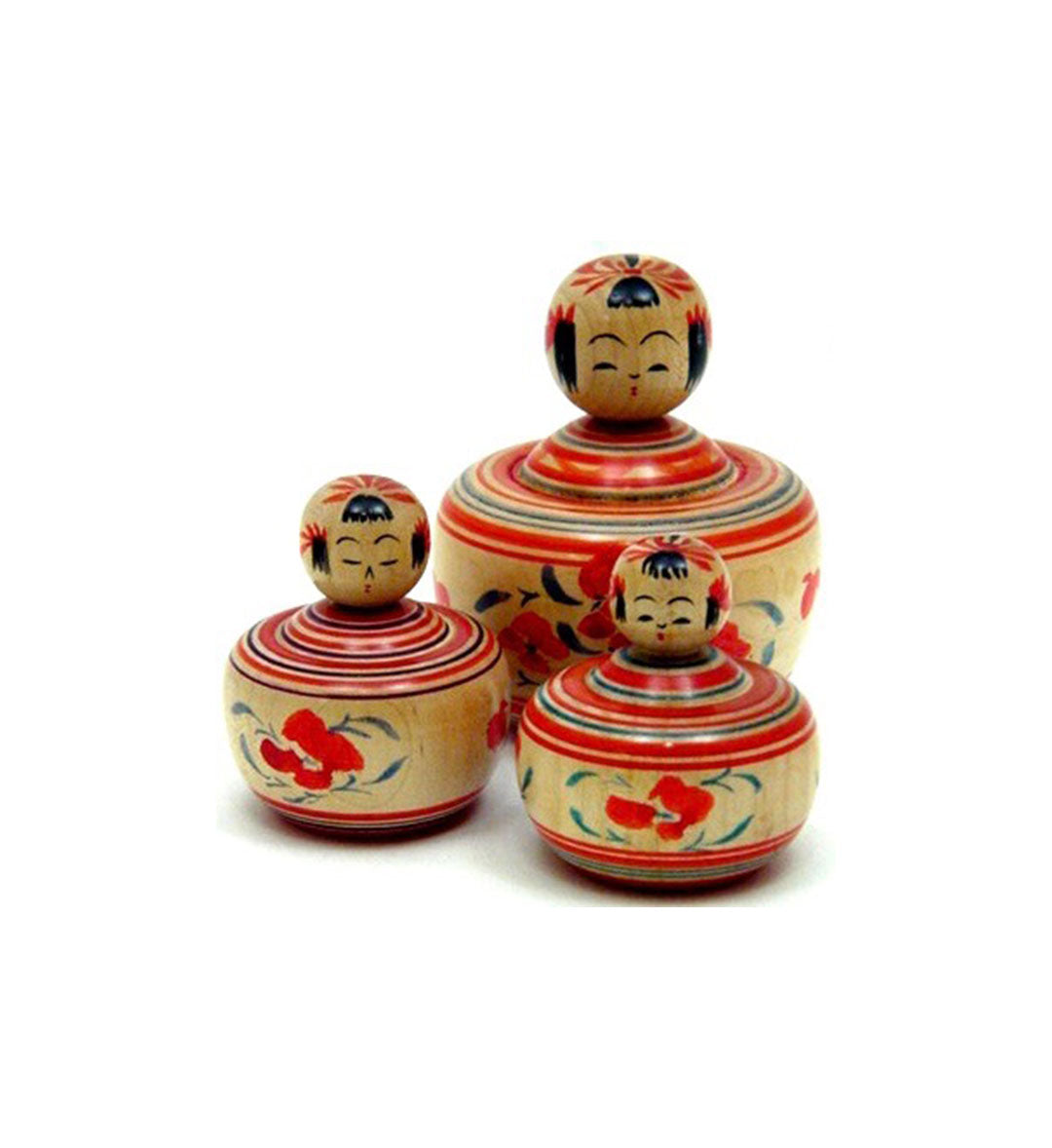
Yamagata-Sakunami-Kei
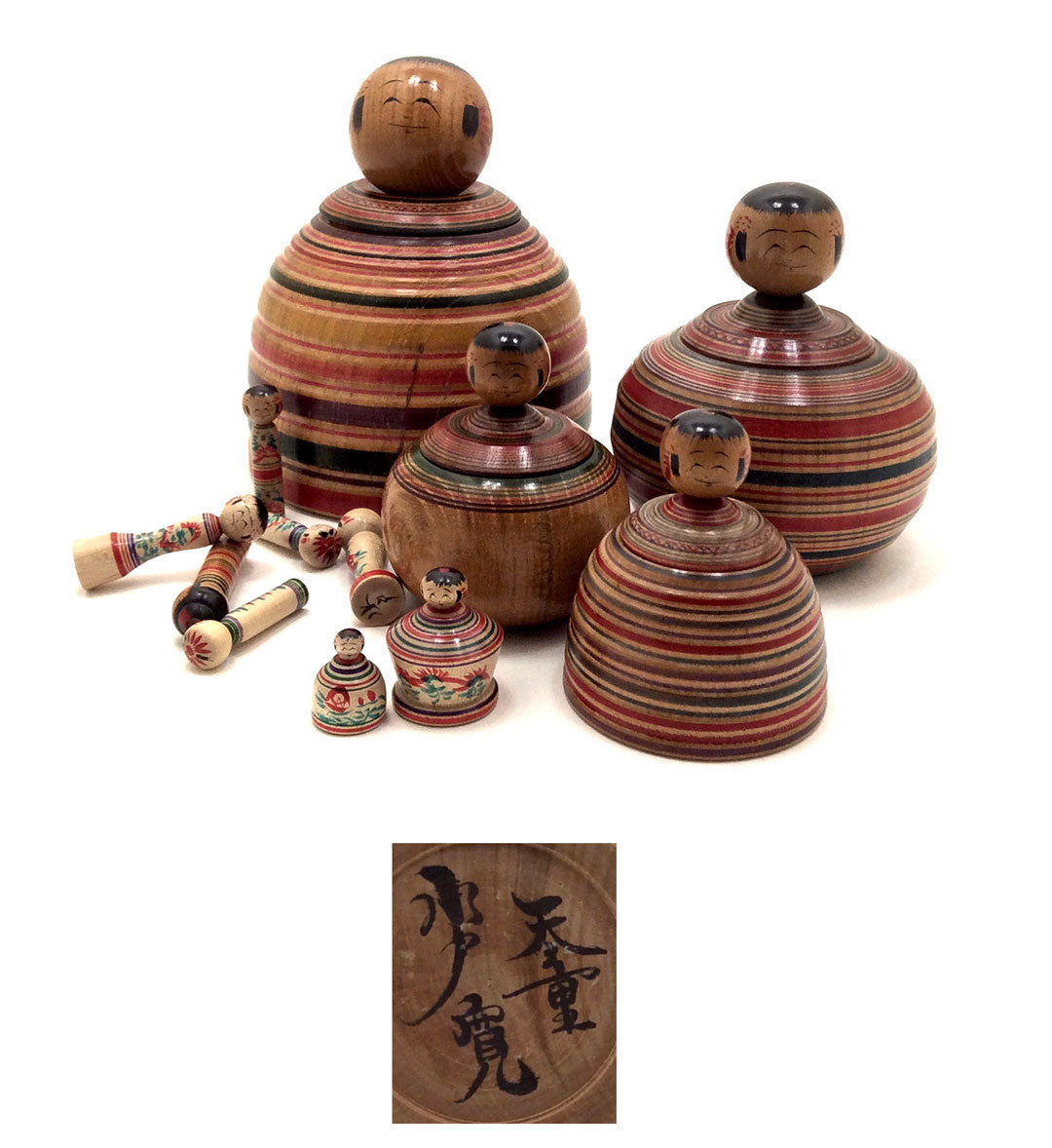
Zao-Kei | Mito, Hiroshi
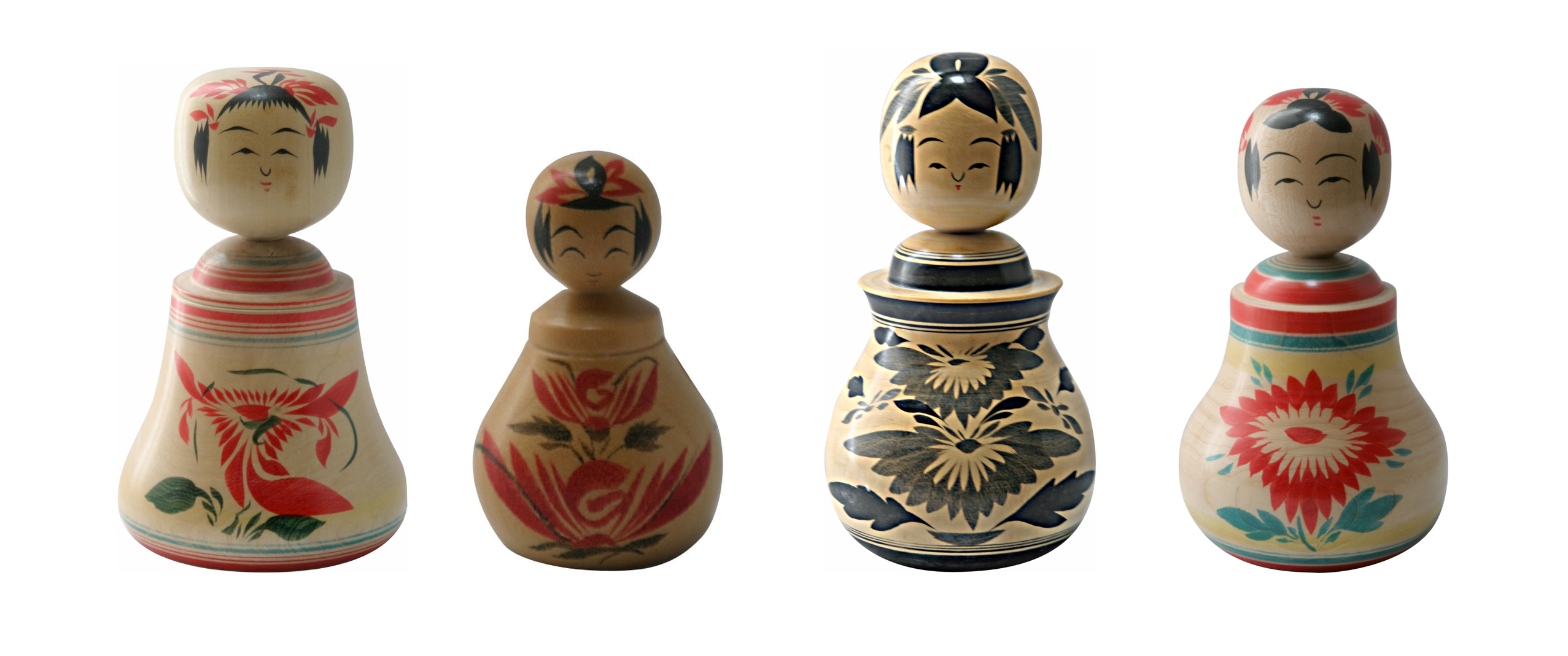
Nemariko
Ranging in size from 1-1/2” to 6-0”, these dolls are a substrain of the Narugo family. As you will notice, they differ from the Ejiko dolls by being taller than they are wide, and are far more limited in the patterns used on the body. Chrysanthemums, maple leaves, and camellia blossoms are the main motifs. All of them are similar in facial features, and while they are always made of one piece of solid wood, the head will turn and squeak, just as their larger sisters do. They are never hollowed out to contain toys.

